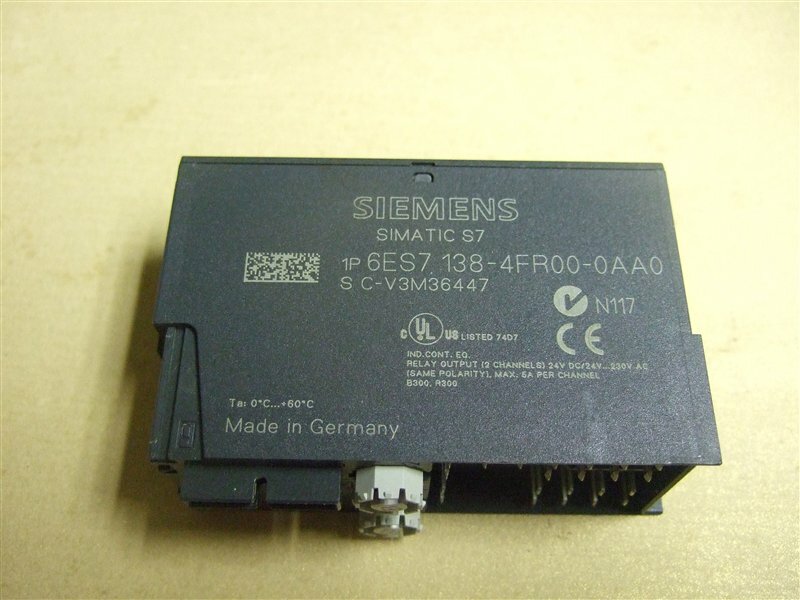
- #SIEMENS SIMATIC S7 INSTALL#
- #SIEMENS SIMATIC S7 UPDATE#
- #SIEMENS SIMATIC S7 CODE#
- #SIEMENS SIMATIC S7 WINDOWS#
#SIEMENS SIMATIC S7 CODE#
Our vulnerability, CVE-2020-15782, bypasses existing protections within the execution environment of the PLC, including a sandbox where engineering code would normally run. The integrity of a PLC is crucial to operators and engineers, and an attacker’s goal would be to damage that integrity by hiding code on the controller and elevating privileges. Understanding-and Jailbreaking-the PLC Sandbox Our attack targets deep in the kernel and avoids any detection because we are able to escape the user sandbox and write a shellcode into protected memory regions. Today, we take this research one step further and demonstrate a new and sophisticated remote attack that allows us to gain native code execution on Siemens S7 PLCs. Siemens resolved this issue in SSA-686531. They used a UART physical connection to dump the firmware and found an exploit chain that enabled them to hide code in a deeper place within the system and obtain code execution without restrictions. The same year Ali Abbasi and Tobias Scharnowski presented how they physically attacked the SIMATIC 1200 to gain code execution on Siemens S7 PLCs.

Siemens partially resolved this issue and provided mitigations, as documented in SSA-232418. By understanding how cryptographical messages were exchanged, they were able to hide code in user memory, which is invisible to the TIA engineering station. The researchers behind Rogue7 were able to create a rogue engineering station which can masquerade as the TIA portal to the PLC and inject any messages favorable to the attacker.
#SIEMENS SIMATIC S7 WINDOWS#
This issue was resolved with a combination of Microsoft updates to its Windows operating system and Siemens product updates as documented in SSA-110665 and SSA-027884.
#SIEMENS SIMATIC S7 INSTALL#
Doing so allowed the malware to not only stealthily install itself on PLCs, but also shield itself from WinCC when the control software attempted to read infected memory blocks from the PLC.

Then, Stuxnet was able to hide the code alteration on the PLC by manipulating the WinCC binaries on the local engineering station. The code alteration itself was done by manipulating the local Step 7 projects files. First, we had Stuxnet, which gained user-level code execution on the old SIMATIC S7-300 and S7-400. Over the years we’ve seen many attempts to achieve such a capability on Siemens PLCs given the company’s position among the market’s leaders. This means, being able to hide code deep inside the PLC that will be undetected by the operating system, or any diagnostic software. The holy grail in PLC vulnerability research, from the attacker perspective, is to achieve unrestricted and undetected code execution on the PLC. Siemens and Claroty wish to emphasize that users apply the S7-1200 and S7-1500 CPU updates as well as those for other affected products given the critical nature of this vulnerability.
#SIEMENS SIMATIC S7 UPDATE#
The close coordination between Siemens and Claroty included an exchange of technical details, attack techniques, and mitigation advice that helped shape the patches available in today’s update from Siemens. This disclosure is an outcome of Siemens’ and Claroty’s existing partnership, which fosters not only tight cooperation between our research team and the vendor on disclosures, but also in the security of the overall industrial ecosystem. An attacker could use this vulnerability, CVE-2020-15782, to remotely obtain read-write memory access that would be difficult to detect and remove. Claroty, meanwhile, has taken those efforts a step further using a newly discovered vulnerability that bypasses the PLC sandbox within Siemens’ SIMATIC S7-1200 and S7-1500 PLC CPUs to run native code in protected areas of memory. Previous work has required physical access and connections to the PLC, or techniques that target engineering workstations and other links to the PLC in order to gain that level of code execution.

These complex systems have numerous in-memory protections that would have to be hurdled in order for an attacker to not only run code of their choice, but also remain undetected. Claroty is not aware of any public exploitation of this vulnerability.Īchieving native code execution on an industrial control system such as a programmable logic controller (PLC) is an end-goal relatively few advanced attackers have achieved.Users are urged to update to current versions.Siemens has updated the firmware for both the SIMATIC S7-1200 and S7-1500 PLCs to address this vulnerability and informs customers about the details in its advisory, SSA-434534.An attacker could abuse this vulnerability on PLCs with disabled access protection to gain read and write access anywhere on the PLC and remotely execute malicious code.Claroty has found a severe memory protection bypass vulnerability (CVE-2020-15782) in Siemens PLCs, the SIMATIC S7-1200 and S7-1500.


 0 kommentar(er)
0 kommentar(er)
